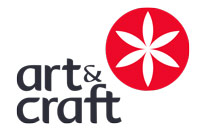One can say that Horezu is the most important center of Romanian folk pottery creation. Potters here have a long tradition and Horezu vessels are known both in the country and abroad.
Horezu is located in the central part of Valcea country, roughly midway between Ramnicu Valcea and Targu Jiu and is considered the „capital” of Romanian pottery.
Horezu was part of the principality of Farcas, documentary mentioned in a diploma by King Bela IV of Hungary and horezene settlements development has been linked to transhumance routes, crossing the roads outlaws, and the more famous salt road, starting at Big Ocnele, passed by the Lower Pietrari and from Horezu continue to Slatioara and reached Cernesti. Documentary attestation dates from 1487, in a charter which belonged to Prince Vlad the Monk, which commemorated the village Hurez.
Horezu current name comes from the name of „ciuhurez” owl-like bird that inhabits forests around. TheHurezi name originally belonged to current localities Lower Romans, where Constantin Brancoveanu built a monastery which is a synthesis of art and mastery Roman people until that time, the monastery Horezu, between 1690-1693. Over time, the center of the village moved up the hill about 2 km, probably because of transhumance routes, and other roads intersected in that place became a place conducive to the development of a fair.
Subsequently, Constantin Brancoveanu donates village monastery, and this place will develop after 1780, when it will become known as the Fair Horezu.
In terms of cultural, the character of the Horezuarea is historic, monastic, oriented specific Romanian handicraft activities such as pottery, weaving handloom and religious painting. Pottery continue to represent the emblem of the place, occupation being passed from generation to generation by families of potters.
In 2012, during the seventh session, UNESCO decided enrollment Horezu pottery on the Intangible Cultural Heritage List, „a traditional craft shop”.
At first, at Horezuwere made two types of vessels „all ships”, used daily, which were not „decorated” but only „sprinkled” with a few splashes of color made on the enamel and artisanal vessels, where craftsmanship craftsmen was visible on grounds that have already become established (Horez cock, tree of life, double helix, etc.).
Horezu pottery technical training is not secret and is known to all local potters. Earth is harvested in autumn from Hurezu Peak Monastery and is passed through the blender until it becomes like the consistency of putty. It is held in cellophane not to harden and, by using hand wheel, it is given the desired shape.
Mineral colors are: white, black and red earth, copper green, blue, cobalt blue, and the vessels are decorated with „jay” and „horn”. The reasons used are rooster, stars, snakes, trees, people, flowers, fish, double spiral, straight line, wavy line, leaf, ear, tail peacock tree of life.
Horezu vessels carry the long tradition of processing clay and craftsmen dedicationthat make each object to be unique and contain a part of Romania. Currently, Horezu is a powerful attraction ethnographic, is a place where you can find Romanian crafts, craftsmen workshops, beautiful stories and a lot of goodwill.
We thus invite you to make a foray into the Romanian folk art and to enjoy the Horezu ceramic products available on our website. Each product is accompanied by certificate of authenticity, wears potters and, above all, unique.




